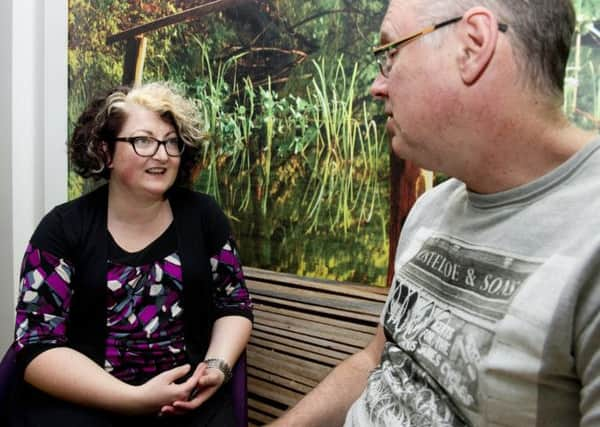Pictures that leave psychiatric patients shaking their heads


These generic photographs are posed, usually by an actor, and have been used so many times now that they have become synonymous with mental illness in the minds of most people.
But is it really an accurate way to portray what is often a very complex issue? The answer is surely a resounding “no”, and now a new campaign hopes to change this perception.
Advertisement
Hide AdAdvertisement
Hide AdTime to Change, the mental health anti-stigma programme run by Mind and Rethink Mental Illness, has sent picture editors alternative images to the simplistic and stigmatising head in hands, or “headclutcher”, shot that for years have been used alongside mental health stories.
The campaign, called Get the Picture, is backed by Stephen Fry and comes after years of work by mental health activists who have tried to offer a more positive view. It also follows a recent survey of nearly 2,000 people, with more than half saying the “headclutcher” image was stigmatising. Over three-quarters of those questioned said it didn’t convey how it feels to have a mental health problem, while 30 per cent said seeing images relating to suicide or self-harm triggered their own suicidal feelings.
Sue Baker, director of Time to Change, believes that we need to look at mental health differently. “We recognise that mental health can be a complex topic to illustrate, which is perhaps why we’ve seen so much use of an over simplistic ‘headclutcher’ shot over the years. For some time, campaigners have been highlighting the negative impact of the image in the media so we wanted to combine our efforts and come up with a way of offering picture editors a fresh and more realistic range of photographs.”
These images are freely available to the media and the campaign has the backing of the UK Picture Editors’ Guild.
Advertisement
Hide AdAdvertisement
Hide AdFor those who have experienced mental illness in one form or another it is an important shift in attitude. Rehaan Ansari is a 24 year-old medical student at Newcastle University and one of four people with experience of mental health problems to feature in the campaign.
“The ‘headclutcher’ is an unfair and inaccurate representation of what life is like with a mental health condition – but it’s often the image most commonly associated with people who experience them. It’s definitely time to change the backwards attitude that mental health conditions are something to be ashamed of.”
Clare Wyke, from Leeds, works for the NHS in Yorkshire and is another of those involved. “Having first been diagnosed with depression 20 odd years ago I’ve had to do a lot of challenging myself, both to aid recovery from each episode and to build my own resilience in a bid to future-proof myself. I’ve found there’s no such thing as ‘future-proofing’ when it comes to my own journey with mental health challenges at my side. Instead I’ve learnt that little things matter. The things that fill my energy tank help, the things that drain it don’t.”
She hopes the alternative images, which feature ordinary people, will help to provide a better representation of the vast diversity that surrounds mental health problems.
Advertisement
Hide AdAdvertisement
Hide Ad“I think there’s a need for accuracy and authenticity and I think it’s important that we can use photos of real people that represent who we are as people, rather than actors or images that are staged. People are people and we need the media to help get that message across.”
For more information go to www.time-to-change.org.uk